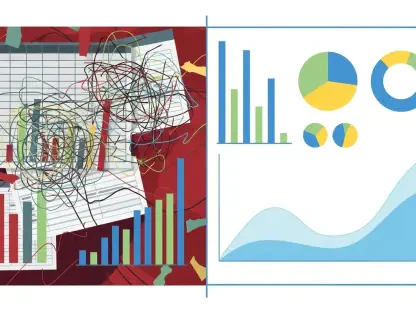California’s Senate Bill 1137 represents significant regulatory changes for oil and gas operators, mandating new standards for facilities near sensitive areas. The law introduces Health Protection Zones (HPZs) spanning 3,200 feet around residences, schools, hospitals, and similar sensitive sites. Within this perimeter, heightened safety, environmental, and community engagement measures come into play. As the law is now in full effect across the state, operators must navigate these requirements to maintain compliance. This comprehensive overview will assist operators in understanding and adapting to the legislation to ensure smooth operations.
Understanding Health Protection Zones
HPZs are defined as the zones within 3,200 feet of sensitive receptors such as homes, schools, and hospitals. These zones are critical for mitigating the potential impact of oil and gas operations on nearby communities. Operators must identify if their facilities fall within these designated zones by using resources like the interactive mapping tool provided by California’s Geologic Energy Management Division (CalGEM). Once an HPZ presence is determined, a range of compliance steps must be taken to adhere to the rules set forth by SB 1137. This begins with familiarizing oneself with the specific parameters of the HPZs and recognizing the importance of proactive measures in safeguarding public health and welfare.
Recognizing the significance of these HPZs involves inspecting operational footprints and establishing a clear boundary for compliance. Ensuring all facilities’ operations comply with laws is crucial since any oversight could lead to severe penalties. Being proactive at this stage is essential for ensuring operations within an HPZ do not contravene state laws. Identifying sensitive receptors within these zones serves as a foundational step for companies, helping them engage positively with the regulations. This knowledge can aid in formulating a strategic approach to meet all operational requirements.
Compliance Requirements for Existing Facilities
As of the current year, all oil and gas production facilities with wellheads situated within an HPZ must fully comply with a set of precise operational, environmental, and community engagement requirements. These include adhering to local, state, and federal permits, ensuring that public notice of contact information is visible at site perimeters for addressing complaints concerning noise, odor, and other issues. Noise control regulations mandate that sound levels between 8 p.m. and 7 a.m. remain at ambient noise levels along property lines, while measures are required to control dust and particulate matter to prevent migration beyond site boundaries.
Facilities must also meet air quality compliance standards, including ceasing the use of equipment not aligned with air district requirements to control vapor emissions. In addition, operators are required to conduct chemical analyses of produced water, which must be submitted to CalGEM within a three-month window after transportation. These stringent criteria ensure that operators contribute toward a safe and environmentally conscious operation, safeguarding community interests and meeting state-mandated standards for environmental stewardship and operational transparency.
Implementing Leak Detection and Response Plans
A crucial component for operators within HPZs involves developing a comprehensive leak detection and response plan. This plan targets the identification and handling of chemical emissions such as methane and hydrogen sulfide, ensuring robust monitoring and response mechanisms are in place. Operators must have submitted and initiated these plans by now, adhering to a timeline where the Air Resources Board sets performance standards for detection systems. Once a plan is approved by CalGEM, it must be fully operational, effectively monitoring emissions as stipulated by regulatory bodies.
Key components of these plans include the development of an emissions detection system that meets ARB’s performance standards. This involves technological investments that enable precise monitoring of emissions in real-time, allowing operators to respond effectively to any detected leaks. These plans hold operators accountable for potential fallout, compelling them to address leaks promptly and reduce the environmental impact of their operations. A structured approach to emissions management showcases an operator’s commitment to the community and environmental protection, fostering trust and ensuring ongoing operational compliance.
Notification and Water Quality Sampling Protocols
Before initiating any work requiring a Notice of Intent (NOI) within an HPZ, operators are legally obliged to notify property owners and tenants within a 3,200-foot radius of the wellhead. Offering to sample and test water wells or surface water on these properties is a necessary part of these proceedings. Baseline water quality sampling must occur before drilling, accompanied by follow-up testing within 120 days post-drilling. All findings from this sampling process must be reported to CalGEM, the State Water Resources Control Board, and regional water boards.
This protocol ensures a comprehensive understanding of water quality impacts from operations, providing communities with the transparency they require. Acknowledging and adhering to these obligations strengthens public trust, showcasing an operator’s dedication to safety and environmental integrity. Through proactive and thorough water sampling and transparent communication with affected parties, operators demonstrate their commitment to responsible stewardship and community welfare, thereby aligning their operations with California’s stringent regulatory landscape.
Annual Reporting and Exemptions
As mandated by SB 1137, operators with facilities in HPZs are required to present annual reports comprehensively detailing operations. Reports must cover the operational status of emissions detection systems, validated alarms, community notifications relating to enduring leaks, and results of baseline and post-drilling groundwater testing. Failure to comply with these rigorous reporting requirements could lead to significant repercussions, emphasizing the importance of maintaining accurate and detailed records.
Importantly, SB 1137 stipulates certain exemptions where the law does not apply, such as underground gas storage wells and operations strictly associated with plugging and abandoning wells for developments unrelated to fossil fuels. These exemptions ensure that while safety and environmental safeguarding remain priorities, operators involved in non-energy-related projects are not unduly hampered by the overarching regulatory framework. Recognizing these distinctions allows operators to streamline their reporting processes, ultimately enhancing operational efficiency.
Resources and Strategic Planning for Compliance
Navigating the complexities of SB 1137 compliance necessitates a robust toolkit of resources and strategic foresight. CalGEM offers an SB 1137 webpage filled with guidance, documentation, and tools, aiding operators in ensuring adherence to the stipulations. The interactive mapping tool remains pivotal in confirming operational proximity to HPZs, while the sensitive receptor identification form helps operators identify critical areas within their communities. Exploring these resources equips operators with the knowledge and tools needed to meet regulatory requirements comprehensively.
A strategic approach encompasses close community engagement, consistent updates on regulatory changes, and investment in cutting-edge monitoring technology. Such technologies facilitate effective leak detection and ensure compliance with emissions standards. By adopting proactive measures and formulating precise plans ahead of stipulated deadlines, operators can significantly mitigate risks associated with compliance failures. Ensuring ongoing community communication and leveraging technological advancements will position operators to not only meet, but exceed, regulatory expectations, fostering a harmonious relationship with stakeholders.
The Path Forward for Operators
California’s Senate Bill 1137 emerges as a pivotal piece of legislation, marking significant changes in regulations for oil and gas operators. This bill mandates that facilities situated near sensitive locations must adhere to new standards. Central to the law are Health Protection Zones (HPZs), which establish a 3,200-foot boundary around areas such as residences, schools, hospitals, and other sensitive sites. Within these zones, operators face increased requirements concerning safety, environmental standards, and community engagement. As this law has been fully implemented across California, oil and gas operators are required to navigate these stringent guidelines to ensure compliance. This comprehensive guide serves as a valuable resource for operators, helping them to understand and adapt to the new regulations to continue their operations smoothly. It’s imperative that operators stay informed and adjust their practices accordingly to maintain compliance with the state’s evolving environmental and safety standards.









